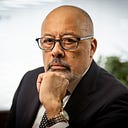The Boston Holiday Party Controversy: A Reflection on Diversity, Equity, and Shared Spaces
In recent weeks, the city of Boston found itself embroiled in a controversy that not only captured local headlines but also garnered international attention, all centered around an innocuous holiday party. The event, hosted at Parkman House on Beacon Hill, was intended for the “Electeds of Color” group — a gathering of lawmakers and their partners who aim to foster collaboration among those representing communities of color in the city. However, what should have been a simple celebration turned into a heated debate on issues of diversity, equity, and inclusion.
The controversy began when a City Hall aide mistakenly sent an invitation to the entire Boston City Council, including its seven white members. Shortly after the error, an apology was issued, explaining that the party was intended for lawmakers of color. This mistake became the catalyst for outrage, with many accusing the event of promoting “reverse racism” and questioning the principles of diversity and equity.
Meanwhile, Mayor Michelle Wu, on the night of the party this week, said the group offered a “space to build coalitions and represent community,“ and said she was proud to host many holiday parties. For Paul Parara, a local radio host known as Notorious VOG, the fact that Wu, who hosted the party, is the first Bostonian of color and woman elected mayor in the city’s history, explained much of the outrage. Other mayors, as well as Massachusetts governors, have hosted events “specifically for communities of color and it’s never been a problem. “It’s the same white grievance card,” he said Friday. “There’s nothing to it.”
To understand the significance of the “Electeds of Color” holiday party, one must draw parallels to identity-based political groups and caucuses within the US Congress, such as the Congressional Asian Pacific American Caucus, the Congressional LGBTQ+ Equality Caucus, and notably the Congressional Black Caucus. These caucuses serve a crucial purpose — they bring together lawmakers who share common experiences and represent marginalized communities. These groups provide a platform for discussing and addressing unique challenges faced by these communities.
Furthermore, this controversy mirrors a troubling pattern seen on college campuses and student unions. Student groups and unions that aim to support students of color and identity-based groups have faced similar pushback. These organizations serve the purpose of unifying concerned and marginalized communities, much like the caucuses in Congress. However, they, too, have been met with resistance, as some perceive them as divisive or exclusionary.
State Representative Russell Holmes, one of the founders of the “Electeds of Color” group, expressed his disappointment at the reaction to the event, stating that it is rooted in “pure hatred.” The group’s mission, formed about 13 years ago, was to improve communication and collaboration among lawmakers representing communities of color. The holiday party was more than just a social gathering; it was a space for building a support network, mentorship, and collaboration on issues ranging from police brutality to political office openings to redistricting processes. It was about lawmakers who often face similar challenges coming together to support one another.
Councilor Liz Breadon, who is white, expressed no objection to the mayor hosting a party for elected officials of color. She rightly recognized that the event was not about excluding anyone but creating a space for marginalized communities to come together, just as caucuses in Congress do.
The controversy surrounding this holiday party reflects a broader discussion on the importance of shared spaces for marginalized communities. Identity-based political groups and caucuses exist for a reason — to address unique issues and provide support. These gatherings are not about exclusion but rather about strengthening communities and advocating for change.
Boston, like many other cities, remains divided along racial lines. The fact that certain neighborhoods are associated with specific racial groups reflects the ongoing issue of segregation. These divisions highlight the need for spaces where marginalized communities can come together to discuss their unique challenges and experiences.
Moreover, it’s essential to consider the historical context of Boston’s reputation for racial segregation and the persistence of racial wealth gaps. These issues are deeply rooted and continue to shape the city’s dynamics.
In conclusion, the controversy surrounding the “Electeds of Color” holiday party in Boston is a reminder of the ongoing struggle for diversity, equity, and inclusion. Parallels can be drawn to identity-based caucuses in the US Congress, such as the Congressional Black Caucus, as well as the resistance faced by student groups and unions on college campuses. These spaces serve as vital platforms for marginalized communities to connect and address unique challenges faced by their communities. The importance of these spaces cannot be understated in a society where racial disparities persist. Instead of condemning such events and organizations, it is more productive to recognize their significance in the ongoing pursuit of a more inclusive and equitable future for all.
Effenus Henderson
